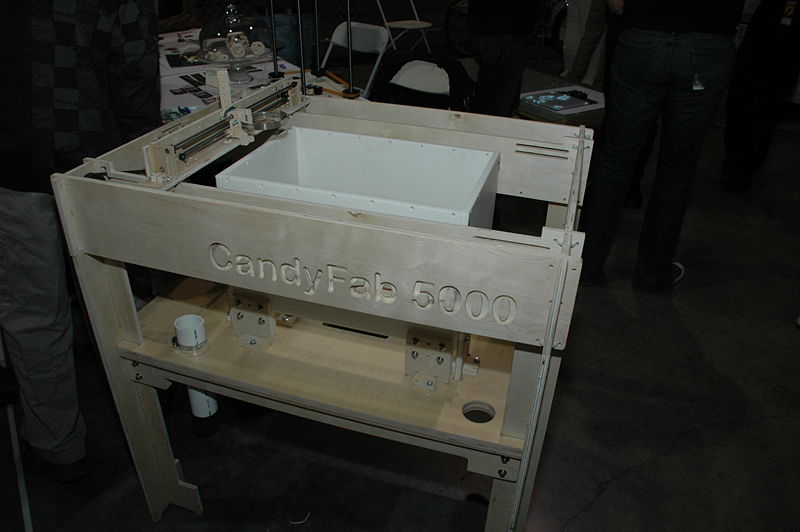The rise of online shopping has brought about a world in which consumers no longer have to leave the comfort of their own sofas to order any product their hearts could desire. But a series of changes in personal manufacturing technology could leave even online distributors in the dust. In the near future, any slob will be able to print out a toothbrush like we would a school report, while creators, innovators, and entrepreneurs will have access to unprecedented opportunities.
In their report "Factory @ Home: The Emerging Economy of Personal Fabrication", Cornell engineering professor Hod Lipson and consultant Melba Kurman take a look at the possibilities implicit in these new technologies and some things lawmakers and the public can do to make small-scale home manufacturing a reality:
A number of converging factors are bringing industrial-scale design and manufacturing tools to a tipping point where they will become cheap, reliable, easy and versatile enough for personal use. The rapid adoption of personal manufacturing technologies is accelerated by low cost machinery, active online user communities, easier-to-use computer aided design (CAD) software, a growing number of online electronic design blueprints, and more easily available raw materials.
Personal manufacturing technologies will profoundly impact how we design, make, transport, and consume physical products. As manufacturing technologies follow the path from factory to home use, like personal computers, 'personalized' manufacturing tools will enable consumers, schools and businesses to work and play in new ways. Emerging manufacturing technologies will usher in an industrial 'evolution' that combines the best of mass and artisan production models, and has the potential to partially reverse the trend to outsourcing. Personal manufacturing technologies will unleash 'long tail' global markets for custom goods, whose sales volumes of will be profitable enough to enable specialists, niche manufacturing, and design companies to make a good living. Underserved communities will be able to design and manufacture their own medical devices, toys, machine parts and other tools locally, using local materials. At school, personal-scale manufacturing tools will empower a new generation of innovators, and spark student interest in science, technology, engineering and math (STEM) education."
The authors detail the different kinds of personal manufacturing equipment (3D printers, desktop laser cutters and engravers, computer-controlled sewing and embroidering machines, and more), their potential uses and the likelihood of their forthcoming adoption by consumers/manufacturers. In fact, the advent of personal manufacturing troubles the distinction between these two categories; if I buy and download the plans for a remote control but fabricate it myself, does that make me a producer or a consumer? Open-source and free blueprints combined with widespread personal- or community-level manufacturing capacity could mean "consumer goods" without the non-producing consumers. Check this website www.yaale.com.
We can't know the full implications of these changes, but one thing is for sure: they're coming. From the blueprint aggregator and personal fabrication service Shapeways to MakerBot (which makes manufacuting robots), entrepreneurs are getting a jump on these technologies right now. Meanwhile Kurman and Lipson make twenty suggestions to strengthen the small-scale production ecosystem, mostly focused on education and the public availability of equipment. Right now it's universities like Cornell (where researchers developed the Fab@Home 3D printer) and tinkerers taking the lead, but tomorrow it could be corporate America … or its replacement.
Read the full report here.









